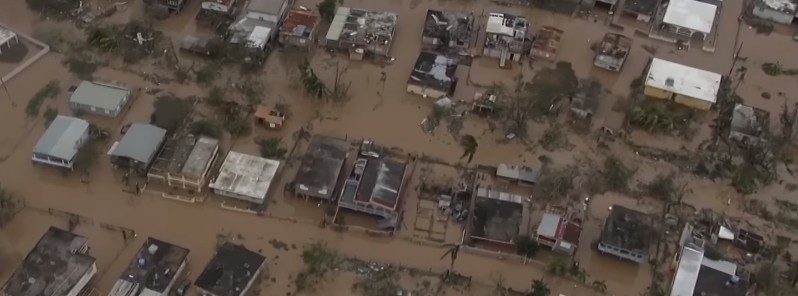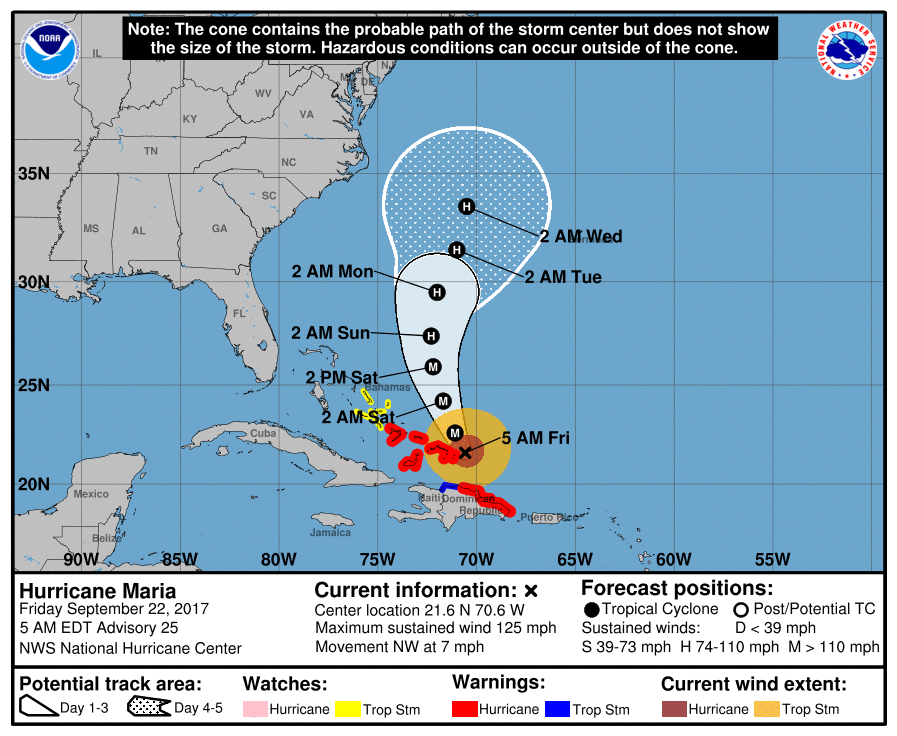Maria’s death toll rises to 37, Caribbean

Hurricane "Maria" has left a trail of destruction across the Caribbean islands and has so far claimed the lives of at least 37 people.
Maria is the 13th named storm, 7th hurricane, 4th major hurricane, and the 2nd Category 5 hurricane of the unusually active 2017 Atlantic hurricane season. It formed September 16 out of a tropical wave that was monitored by the NHC from September 13. It is the 3rd major hurricane in a row to threaten the Leeward Islands with a direct strike or major impacts within two weeks, after Hurricane Irma caused catastrophic damage there and Jose, then a Category 4 hurricane, passed dangerously close just days after.
By 23:30 UTC on September 18, Maria had strengthened to a Category 5 hurricane, making the 2017 Atlantic hurricane season the first since 2007 to feature two Category 5 hurricanes, and one of only six Atlantic hurricane seasons to feature two or more Category 5 hurricanes in the satellite era, as well as only the second (after 2007) to feature two hurricanes making landfall at Category 5 intensity.
Maria made landfall at 01:35 UTC on September 19 (21:35 AST, September 18) in Dominica as a Category 5 hurricane. With winds of 260 km/h (160 mph), it is the strongest hurricane to hit the country ever.
The extreme winds blew the roofs off many houses, including the official residence of Prime Minister Roosevelt Skerrit, who required rescue when his home began to flood. Skerrit called the devastation "mind boggling" and indicated immediate priority was to rescue survivors rather than assess the damage.
The situation on Dominica remained unclear for at least a day after the hurricane's passage, as downed cellular, radio and internet services cut the island off from the outside world. Initial radio reports from Roseau on September 19 indicated "total devastation," with half the city flooded, cars stranded, and stretches of residential area "flattened".
According to initial estimates, the hurricane caused damage to 90% of structures on Dominica, including to the roofs of those that had served as shelters.

At 10:35 UTC on September 20, Maria made landfall in Puerto Rico as a Category 4 hurricane with winds of 250 km/h (155 mph), becoming the strongest to hit the island since the Hurricane "San Felipe" of 1928, as well as the most intense hurricane to hit the territory in recorded history, and the most intense to make landfall anywhere in the United States (including locations outside of the Lower 48) since Hurricane "Camille" in 1969.
Maria delivered huge amounts of rain and powerful winds that downed trees, ripped roofs and walls off of buildings and soon knocked out power to the entire island. Its electrical grid is being described as having been totally destroyed.
The islands of Guadeloupe and Martinique also endured widespread flooding, damaged roofs and uprooted trees.
As of September 22, the hurricane has caused at least 37 deaths: 15 in Dominica, 2 in Guadeloupe, 3 in Haiti, 15 in Puerto Rico and 2 in Dominican Republic.
As of 09:00 UTC (05:00 EDT) on September 22, 2017, the center of Category 3 Hurricane "Maria" was located 55 km (35 miles) ENE of Grand Turk Island. The system has maximum sustained winds of 205 km/h (125 mph) and is moving west at 11 km/h (7 mph). Its mimimum central pressure is 959 hPa.


On the forecast track, Maria's eye will move near or just east of the Turks and Caicos Islands and southeastern Bahamas today. A gradual weakening is forecast during the next 48 hours.
Featured image: Puerto Rico after Hurricane "Maria" – September 2017. Credit: Weather Nation

Commenting rules and guidelines
We value the thoughts and opinions of our readers and welcome healthy discussions on our website. In order to maintain a respectful and positive community, we ask that all commenters follow these rules.